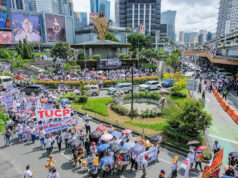Cash program to be expanded by gov’t

THE GOVERNMENT expects to complete the review of the beneficiaries of its conditional cash transfer program by September, the Social Welfare department said on Tuesday, as it looks at the situation of Filipinos who had not been considered poor before the coronavirus pandemic.
The Department of Social Welfare and Development (DSWD) is looking at 1.4 million families, including 700,000 people who had been tagged as nonpoor before the pandemic, Secretary Rexlon T. Gatchalian told a news briefing.
“Come the end of September, the reassessment is complete, and what we can do next is start paying them,” he said.
He said the 700,000 people previously tagged as nonpoor had been heavily affected by the pandemic, pulling them back into poverty.
Another 700,000 people had not been assessed because of pandemic-induced lockdowns, he said. “Combining the numbers, we’re looking at close to around 1.4 Filipino families,” Mr. Gatchalian said.
He said the department is conducting reassessment to ensure the list is filtered.
Mr. Gatchalian said the cash transfer program called Pantawid Pamilyang Pilipino Program (4Ps), accounts for half of the agency’s budget for 2023.
“By the end of the year, after this assessment is done, we believe that we can fully utilize the budget allotted for the 4Ps,” he added.
The program seeks to improve the nutrition and education of “extremely poor households,” especially children aged up to 14 years.
The agency’s poverty database program, which is the basis of 4Ps beneficiaries, will end this year to make way for the full implementation of the community-based monitoring system starting next year, Mr. Gatchalian said.
The local statistics agency will handle the new system.
Poverty incidence among Filipinos rose to 18.1% in 2021 from 16.7% in 2018, according to the Philippine Statistics Authority. This was equivalent to 19.992 million Filipinos living in poverty.
The government seeks to reduce the poverty incidence rate to 16.4% this year, to 13.2% by 2025 and to 9% by 2028.
In an October 2022 report, the Commission on Audit said 90% of 4.2 million active 4Ps beneficiaries who have been in the program for seven to 13 years remained poor. It warned that most of them might get delisted.
The anti-poverty program received P780.71 billion in funding between 2008 and 2021.
Social welfare experts have said 4Ps should be complemented with other anti-poverty efforts and should never be treated as a standalone program.
President Ferdinand R. Marcos, Jr. earlier asked the Social Welfare department to continue calibrating 4Ps and strengthen other social protection initiatives.
The agency is also implementing the so-called Assistance to Individuals in Crisis Situation program, which Mr. Gatchalian said has used about half of its funding.
He also cited the pension program for senior citizens and supplemental feeding programs at daycare centers. — Kyle Aristophere T. Atienza



